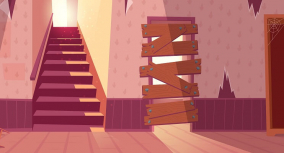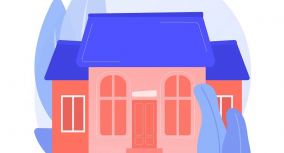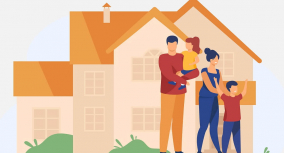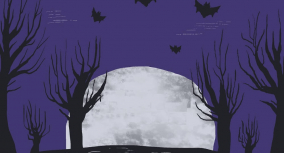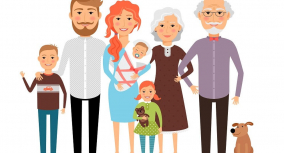The main Wuthering Heights themes—love and revenge—lie at the heart of Emily Brontë’s gothic novel. These intense emotions drive every character’s decisions and shape the plot’s dramatic twists. The story reveals how passion, grief, and hatred can transform (or even destroy) people. To express these themes in Wuthering Heights, the author uses powerful symbols:
- Ghosts
- The Yorkshire moors
- Weather
- The contrasting houses, Wuthering Heights and Thrushcross Grange
These symbols reinforce the novel’s emotional impact and blur the line between the real and the supernatural.
If you want to explore the deeper meaning of the novel, you’re in the right place. In this article, our Custom-Writing.org experts thoroughly analyze themes of Wuthering Heights, symbols, genre, and setting to help you better understand Brontë’s unforgettable masterpiece.
📗 Wuthering Heights: Genre
Wuthering Heights‘ genre can be described as a romantic novel with hints of gothic and tragic elements. Some of the aspects, such as ghosts and the double, make this story related to gothic fiction. The undeniable nature of Emily Bronte’s novel still makes it more romantic and tragic than anything else.
💌 Wuthering Heights: Themes
The main themes explored by Emily Bronte in Wuthering Heights include:
- different types of love,
- marriage,
- revenge,
- hate,
- nature vs. civilization,
- vicious circle and repetition.
Many readers would be wondering what the central theme of Wuthering Heights is, after all. It is not that easy to highlight only one central theme because they are all interconnected. However, there is one thing that the story goes back all the time. The whole plot is built around the ideas of tragic love and revenge.

Love Themes in Wuthering Heights
Among several themes in Wuthering Heights, love can be considered the most prominent one. Emily Bronte gives the readers a chance to taste all kinds of love described in this story.
There is a passionate and destructive love between Catherine and Heathcliff. Most people would imagine something like that when thinking about the concept of true love.
On the other hand, the cooling counterpart is the feelings between Edgar and Catherine. It is usually a more acceptable kind of love raised in a real family’s security and comfort.
Finally, Cathy and Hareton’s relationship inherits the best parts of the previous two couples. Their love is passionate but not destructive and gentle but not dull.
Despite all the passion between different characters, the love pictured in the story never crosses the line to become sexual. No matter how ugly or destructive the feelings can be, they always remain pure and almost childishly innocent. Below you can check out a few love quotes from Wuthering Heights.
Wuthering Heights: Love Quotes
…I left her, as merry as she could be,.. kindling a spark of spirit in the vacant blue eyes of the Lintons—a dim reflection from her own enchanting face. I saw they were full of stupid admiration; she is so immeasurably superior to them—to everybody on earth, is she not, Nelly?
Wuthering Heights, Heathcliff, Chapter VI
My love for Linton is like the foliage in the woods: time will change it, I’m well aware, as winter changes the trees. My love for Heathcliff resembles the eternal rocks beneath: a source of little visible delight, but necessary. Nelly, I am Heathcliff!
Wuthering Heights, Catherine Earnshaw, Chapter IX
Will you say twenty years hence, “That’s the grave of Catherine Earnshaw? I loved her long ago, and was wretched to lose her; but it is past. I’ve loved many others since: my children are dearer to me than she was; and, at death, I shall not rejoice that I am going to her: I shall be sorry that I must leave them!”
Wuthering Heights, Catherine Earnshaw, Chapter XV
Revenge Theme of Wuthering Heights
In Wuthering Heights, revenge created the vicious cycles of tragic events. It seems like everything starts with Hindley when he decides to take revenge on Heathcliff to come to Wuthering Heights and take his place. Hindley stands on the way between Catherine and Heathcliff’s love.
The feelings of hate and revenge drive the characters to make decisions that they may regret later. Instead of deliberating them, it creates the effect of imprisonment.
It starts the process of repetition. Heathcliff keeps seeking opportunities to ruin everybody’s lives again and again. It is not enough for him when he takes vengeance on Hindley and Edgar. He wants their children to suffer, as well. Moreover, Heathcliff can’t rest until Edgar’s house, Thrushcross Grange, is also in his possession.
It seems like revenge brings him pressure, so he keeps on doing it. When Heathcliff finally loses his interest in it, he leaves the world of living to reconnect with Catherine. Only then, Cathy and Hareton are free to be happy in love.
Wuthering Heights: Quotes on Revenge
I’m trying to settle how I shall pay Hindley back. I don’t care how long I wait, if I can only do it at last. I hope he will not die before I do!
Wuthering Heights, Heathcliff, Chapter VII
Yes, Nell,.. my son is prospective owner of your place, and I should not wish him to die till I was certain of being his successor. Besides, he’s mine, and I want the triumph of seeing my descendant fairly lord of their estates; my child hiring their children to till their fathers’ lands for wages. That is the sole consideration which can make me endure the whelp: I despise him for himself, and hate him for the memories he revives!
Wuthering Heights, Heathcliff, Chapter XX
My old enemies have not beaten me; now would be the precise time to revenge myself on their representatives: I could do it; and none could hinder me. But where is the use? I don’t care for striking: I can’t take the trouble to raise my hand!
Wuthering Heights, Heathcliff, Chapter XXXIII
👻 Wuthering Heights: Symbols & Motifs
If we talk about symbols in Wuthering Heights, we can’t miss some of the horrifying elements such as ghosts and moors. They are all combined to arise as a gothic side of the novel. To understand the meaning of some things you might have missed, let’s analyze this tragedy’s motifs and hidden symbols.

Moors in Wuthering Heights
Have you noticed the constant emphasis of the moors in Wuthering Heights? There is a reason for that.
The landscape is described as the kingdom of moors. They are wide, windy, but with almost no green on them. The soil appears to be somewhat wet and soft, so it makes it hard to cultivate.
Moreover, not only can you get lost there because it all looks similar, but also drown. Therefore, we can see moors as a symbol of the dangerous and wild nature that poses a threat.
We came to the chapel. I have passed it really in my walks, twice or thrice; it lies in a hollow, between two hills: an elevated hollow, near a swamp, whose peaty moisture is said to answer all the purposes of embalming on the few corpses deposited there.
Wuthering Heights, Mr. Lockwood, Chapter III
On the other hand, they become a place for the love play for Catherine and Heathcliff, and later for Hareton and Cathy.
Ghosts in Wuthering Heights: Analysis
Despite multiple mentions of ghosts in the novel, the reader still doesn’t know whether they appear there for sure. Thus, there is no reason to claim that Emily Bronte’s story is not realistic.
When the ghost of Catherine appears in Chapter 3 to Lockwood, it can be explained as a mere nightmare. The claims of the villagers who allegedly see the spirit of dead Heathcliff are unverified.
I tried to draw back my arm, but the hand clung to it, and a most melancholy voice sobbed, ‘Let me in—let me in!’ ‘Who are you?’ I asked, struggling, meanwhile, to disengage myself. ‘Catherine Linton,’ it replied, shiveringly (why did I think of Linton? I had read Earnshaw twenty times for Linton)—‘I’m come home: I’d lost my way on the moor!’
Wuthering Heights, Mr. Lockwood, Chapter III
However, we might interpret the ghosts as symbols of the past. People can’t let go of their memories and feelings and keep holding on to them. Just like them, ghosts stay in the present, reminding of the past.
Catherine Earnshaw, may you not rest as long as I am living; you said I killed you—haunt me, then! The murdered do haunt their murderers, I believe. I know that ghosts have wandered on earth. Be with me always—take any form—drive me mad! only do not leave me in this abyss, where I cannot find you!
Wuthering Heights, Heathcliff, Chapter XVI
🖼️ Imagery in Wuthering Heights
Imagery in Wuthering Heights appears to be quite an important device Emily Bronte uses. The descriptions of nature can serve as reflections of the characters, as well as their moods and feelings.
The weather seems to be changing according to the mood. For instance, rain is used here as a traditional marker of sad turns of the plot. It is rainy and storming when Heathcliff and Mr. Earnshaw die.
Moreover, the imagery of nature hides some hints about the personalities of the characters. For example, Mr. Lockwood can’t stand storms and wishes every day to be sunny. It reflects his positive and cheerful inner self.
🏘️ Wuthering Heights: Setting
The story told by the housekeeper Nelly takes place at the end of the 18th century. Mr. Lockwood eventually left the location in 1802. The moors of Yorkshire are the central location of the novel. The focus shifts back and forth between two houses, Wuthering Heights and Thrushcross Grange.
Discussion of the setting is an important element of Wuthering Heights analysis. Therefore, let’s compare the two central locations of the novel.
The setting of Wuthering Heights consists of several main elements, the central of which is the house with the same name. Wuthering Heights is a home for many characters in the novel. Catherine, Heathcliff, and Hindley spent their childhood there.
This old farmhouse is the embodiment of wildness and simplicity at the same time. It perfectly fits with the surroundings being as strong and stubborn as the moors. The personalities of its inhabitants somewhat resemble the nature of the house.
Wuthering Heights represents nature itself, revealing raw and wild primal instincts of the characters.
Thrushcross Grange, which belonged to the Lintons, serves as a temporary home for Mr. Lockwood. If you remember how lady-like Catherine becomes when she spends time there, you can understand that Thrushcross Grange represents a civilized and tamed attitude.
When it becomes Heathcliff’s property, he decides not to live there because it seems like it doesn’t fit his nature. The house appears to be the only island of proper social manners and urban culture among the moors’ wild landscape.
Just like on the side themes is the battle between nature and civilization, the two houses oppose each other.
We hope that the above information is useful. If you’re looking for exciting essay ideas on the novel, please read this article.
🔗 References
- Wuthering Heights – Emily Brontë – Oxford University Press
- Themes in “Wuthering Heights” – Academic Home Page
- ‘Wuthering Heights’ Themes, Symbols, Literary Devices
- Symbols & Symbolism in Wuthering Heights | Study.com
- The Gothic and Wuthering Heights
- Wuthering Heights – The British Library
- WUTHERING HEIGHTS – JSTOR
- What’s the significance of ghosts in Wuthering Heights? – Quora
